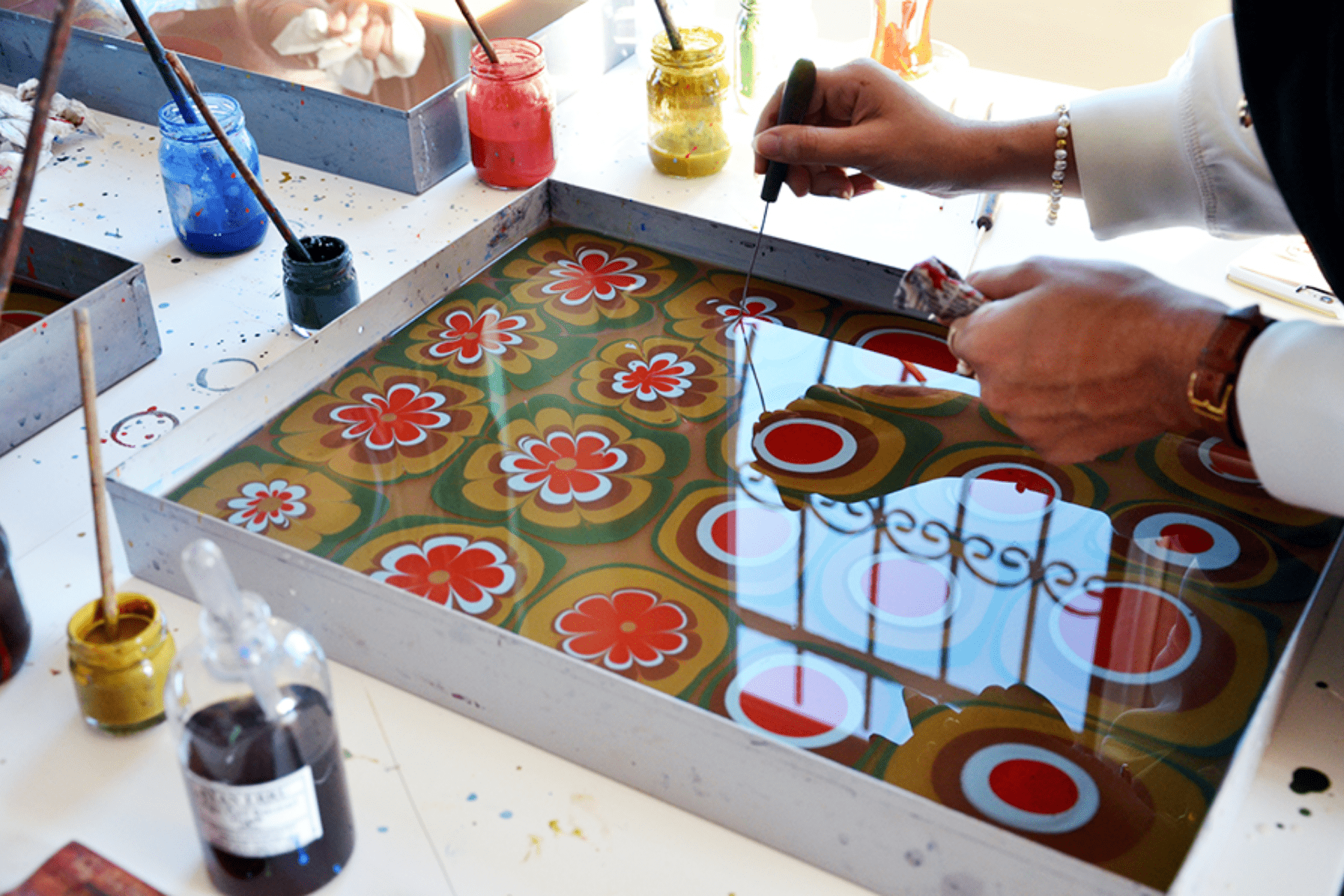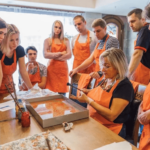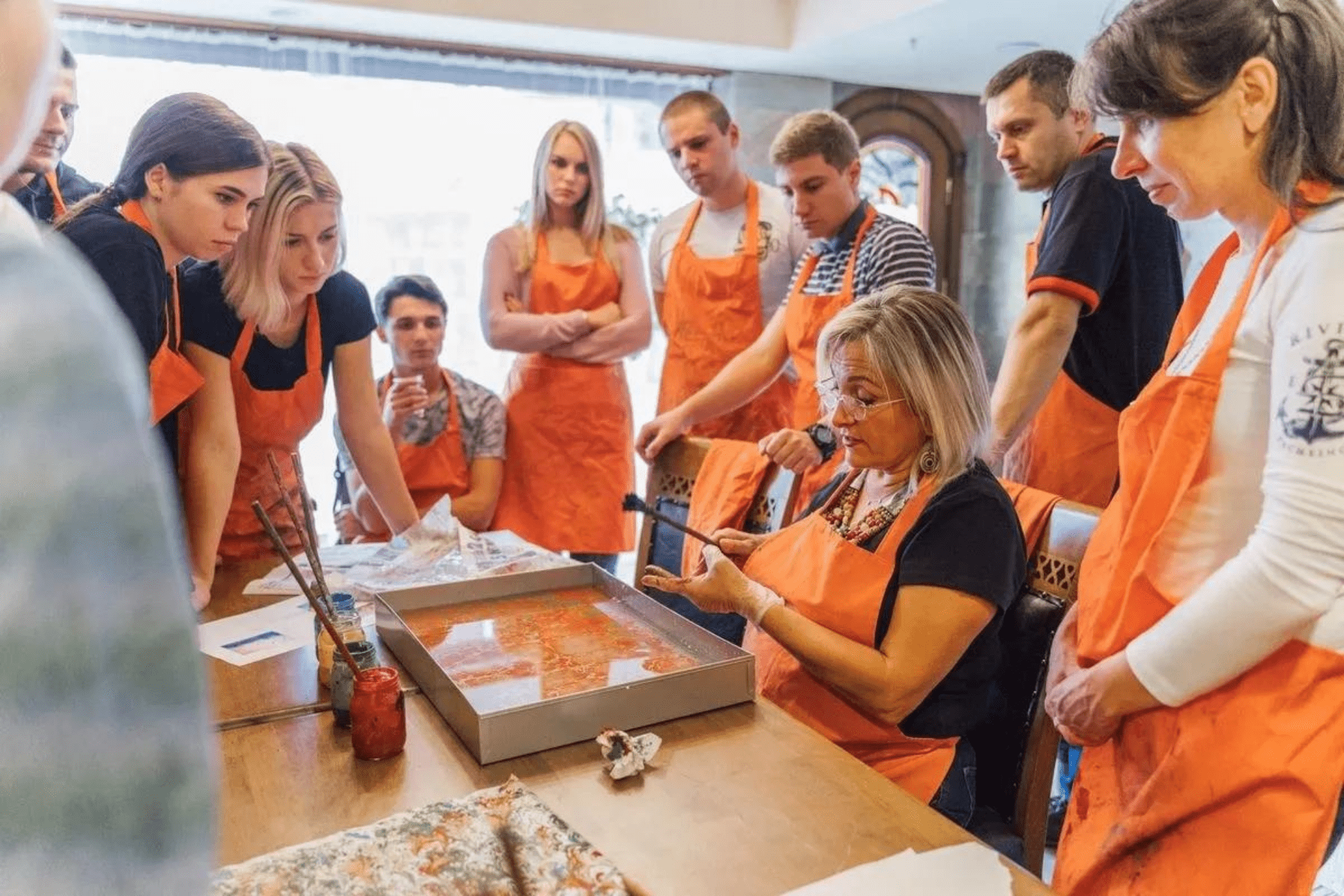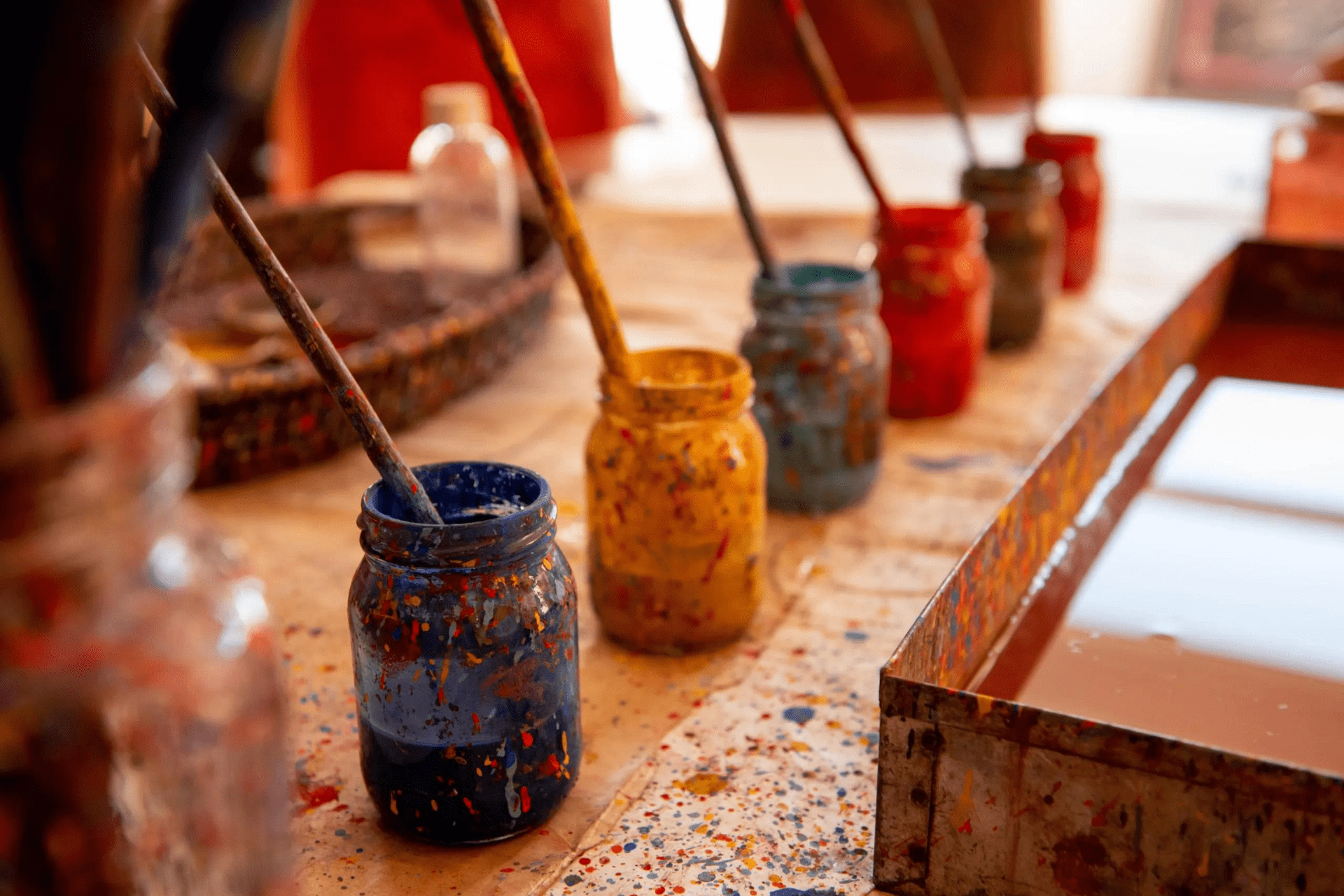Gum Tragacant is obtained from trunk of a thorny plant growing naturally in Anatolian, Persian and Turkestan mountians and called “gaven”. The sap coming out of scratches made on the branches dries up later and solidifies in bone white colored pieces. It is dropped in water with very low hardness at the rate of 20-40 grams/3 litres and kept for two days.The gum having dissolved completely is filtered through a cloth bag and poured into the basin. It should have a dentisty of buttermilk.Gum tragacanth is widely used as herbal medicene(in throat and stomach diseases) in cosmetic and textile industry.
Dye are “mineral dyes” as it is called in clasiccal method obtained from natural metal oxides. Turkish is a very rich country in respect of such natural dyes.Any kind of earth may be first translated into mud then filtered and crushed to from a dye.
Painthbrushes; are made of horsehair bound around a rosetree stick, in a manner to from a circumference with hollow centre.Rosetree is preferred because it prevents mould. Brushes of different thickness and length enable dye application and dye control.
Basin is made of wood or metal of 4-6 cm. depth an about some milimeter larger than the paper size (to offset the dilatation of paper when wet). Usual paper zizes are 35X50 cm. or 25X35 cm.
Water; preferably withouth hardness.The ideal is distilled water. In older times rainwater was favorite but because of acide rain in our times it is no longer advisable.
Paper: The ideal paper is the one handmade and having a high absorbtion capacity and acid-free. On account of its rarity and high cost we don’t advise it to begginers. Instead, any kind of non glossy paper may be used. In order to increasethe absorbtion capaticy and to fix the dye on it(more durable) and alumina solution may be applied on the paper surface. Thus dyes are made more easy to fix.
Gall: The most importent metarial to make marbling. A marbler must well understand what gall is and its functions. To my openion the secret of the marbling lies in the gall. Its main functions are :
- to ensure surface tension, dye spreading over the water surface otherwice dyes sink.
- to prevent mixture of dyes. For instance when blue yellow are simultaneously applied and mixed up as much as possible never green comes out.
- to assist dye fixation on the paper.
- to give different shades of the same color and different size of patterns.





